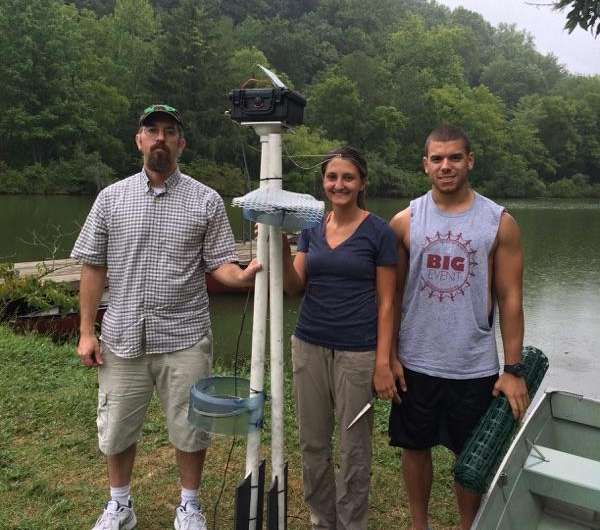Solar exposure energizes muddy microbes

Research at the ASM Microbe research meeting in Boston presents a sediment Microbial Fuel Cell (sMFC) system for remotely investigating the physiology and ecology of electrically active microbes in submerged field sites. Depending on the depth at which device components were submerged, scientists observed variation in start-up time and electricity generation.
"These results suggest long range exchange of electric current between microbial populations in different environments may play a key role in the structuring of electrode biofilm communities," said John Pisciotta, Ph.D., assistant professor in Biology at West Chester University in West Chester, Pennsylvania. Naturally present bacteria in sediments can facilitate electricity generation by forming anode biofilms. So-called sediment microbial fuel cells (sMFCs) have previously been created to harness such microbes for renewable electricity generation from bacterial breakdown of organic material. However, most studies to date have been confined to tightly controlled laboratory studies. This sMFC device is equipped to relay data remotely which should help optimize bioelectrochemical processes, such as electrode-associated bioremediation of organic wastes and pollutants, under actual field conditions.
Devices with their cathodes more deeply submerged in water, 750 cm below the pond surface, started gradually but generated a very stable electric current over the 10-week experimental run; likely due to a higher degree of environmental variability at the pond surface. Researchers were surprised to discover that the microbial community composition on the sediment-buried electrodes, called the anodes, appeared to be affected by the illumination status of the cathode.
Pisciotta1The significance of this research is that field-deployed sMFC can now be designed with a better understanding as to how cathode depth affects start-up time, microbial community structuring and energy recovery from sediments. In the future, this could help human communities generate stable bio-electricity at remote locations for applications like signaling (ex. flashing navigational buoys) powered by the bioremediation of organic wastes in sediments. Total microbe-generated electrical output, along with other environmental parameters, can be monitored remotely using existing cellular networks. This system has the ability to communicate field results in real-time directly to an operator's cell phone or computer, regardless of outside weather conditions.
Once recovered, electrode microbial populations were analyzed using denaturing gradient gel electrophoresis (DGGE) and other molecular methods. Ongoing 16S rRNA gene sequencing is identifying divergent microbial populations that are likely associated with the observed variations in sMFC start up times and efficiency results for the different cathode depth sMFCs.
Results of this study suggest anodes connected to illuminated cathodes develop unique microbial communities in field site trials. "From an applied standpoint, this work provides deeper insight into how novel sMFCs can enable accelerated start up while optimizing bioenergy recovery and stable electrical current flow from sediments," said Dr. Pisciotta.
This research is being presented at the ASM Microbe Research meeting in Boston, MA in a poster session at 12:30 pm, Sunday, June 19. Poster coauthor Paige Minka is a WCU graduate student who built the sMFCs and their data recording and relay components with help from Steve Hicks of project partner institution Stroud Water Research Center in Avondale, PA. Undergraduate Jeremy Irving helped to construct, install, recover and process the sMFCs. Additional information on the functionality of sMFCs is being published in the Journal of Microbial and Biochemical Technology under the title: "Bioelectrochemical and Conventional Bioremediation of Environmental Pollutants" by John M. Pisciotta and James J. Dolceamore.
Provided by American Society for Microbiology



















